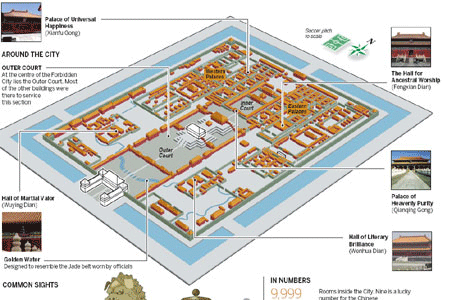A work in progress
Updated: 2011-09-09 08:37
By Yue-man Yeung (China Daily)
Hong Kong, Shenzhen integration has miles to go before it becomes reality
Given the developments over the past decade, there are many who argue that Hong Kong and Shenzhen are already integrated. There is no doubt that both cities are inching toward natural integration, but it could still be some time before a formal marriage between the two is solemnized.
Juxtaposed at the southern tip of China, Hong Kong and Shenzhen are typical of the three decades of reform and opening-up and also an interesting study of paradoxes and fluctuating fortunes.
Shenzhen has metamorphosed from a tiny fishing village to a mega city of more than 10 million inhabitants and currently boasts of an urban and economic growth unparalleled in the world. Hong Kong, too, has played a vital role in spearheading China's economic transformation through capital accumulation, modern management techniques and better access to global markets.
But it is Shenzhen as a special economic zone (SEZ) that has gained the most by being in the shadow of its neighbor. Gone are the days when Shenzhen was viewed as a source of cheap land and labor for Hong Kong industries.
Many of the industries in Hong Kong started to move northward en masse, first to Shenzhen, then to Dongguan, Huizhou and other cities within the Pearl River Delta. The Hong Kong-Shenzhen symbiosis was the spark that later lit up, economically and socially, the whole delta and other regions of China.
Shenzhen was one of five SEZs in China but it has been the most successful by almost every indicator. With an area of 1,953 sq km, the Shenzhen SEZ started off as a small area, but was later extended to the entire territory for administrative purposes in 2010.
What has made Shenzhen special is the fact that its leaders have always pioneered new policies and measures to support sustained growth. The growth was achieved not only by the special policies with set time frames, but also through innovation, superior production techniques and constant technology upgrades.
Shenzhen's relations with its neighbor Hong Kong have been influenced largely by its own policies and the macro-economic situation in China and the world.
The idea of integrating the two cities began before Hong Kong returned to the China fold in 1997 and was initially floated by Shenzhen officials.
Planners and academics had many propositions on how the two cities could be advanced by exchanging people, services and goods. The ideas were considered one-sided and did not get any backing in Hong Kong.
After Hong Kong's return in 1997, the official attitude in Hong Kong has started to change.
But for some years, there was hardly any progress in bringing the two cities together.
The real change of attitude in Hong Kong came in 2001, after China was admitted to the World Trade Organization. Hong Kong's traditional middleman position had come under threat after a series of issues such as the Asian financial crisis and, most seriously, the SARS epidemic in 2003.
Both sides decided to keep the Huanggang border crossing open for 24 hours, signed the Closer Economic Partnership Arrangement and implemented the Individual Visit Scheme.
The policies helped nurture relations between the two cities, increased the flow of visitors and the exchange of professionals. Both cities also came up with forward-looking planning documents called Hong Kong 2030 and Shenzhen 2030.
Over the last few years, the governments on both sides have been actively pursuing avenues for further cooperation.
There is no question that continual improvements will be made, but the realization of a synergistic mega metropolis that encompasses both cities is still some time off.
If the two cities do indeed merge as a functional entity, even without a name, the new mega urban region will rank alongside New York, London, Tokyo and Paris. Whether it is an emerging reality or a slippery utopia, it is anybody's guess. Whatever it is, the next 10 years will be crucial in moving toward that direction.
The author is an emeritus professor of geography at The Chinese University of Hong Kong.
(China Daily 09/09/2011 page7)
E-paper

Unveiling hidden treasures
The Forbidden City, after the Great Wall, is the most recognized tourist site in China.
Mountains to climb
Short and sweet
Game for growth
Specials

China at her fingertips
Veteran US-China relations expert says bilateral ties have withstood the test of time

The myth buster
An outsider's look at china's leaders is updated and expanded

China in vogue
How Country captured the fascination of the world's most powerful fashion player
